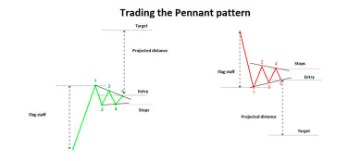Harami Candlestick Patterns: Overview, Types, Trade Setups

Broadly speaking, Harami patterns consist of two candlestick periods, the first of which occurs with a decisive candlestick formation (characterized by a long candle body). This candle is followed by an opposing price period, where sentiment is centered in the opposite direction. Now that we have covered the basics of the harami candlestick pattern, it’s now time to dive into tradeable strategies. Please note all of the subsequent examples are on a 5-minute time frame, but the rules apply to other time frames just as well.
Prior to trading options, you should carefully read Characteristics and Risks of Standardized Options. Spreads, Straddles, and other multiple-leg option orders placed online will incur $0.65 fees per contract on each leg. Orders placed by other means will have additional transaction costs. If you’re interested in mastering some simple but effective swing trading strategies, check out Hit & Run Candlesticks. We look for stocks positioned to make an unusually large percentage move, using high percentage profit patterns as well as powerful Japanese Candlesticks.

Some traders may opt to enter positions once the harami cross appears. If entering long on a bullish harami cross, a stop loss can be placed below the doji low or below the low of the first candlestick. A possible place to enter the long is when the price moves above the open of the first candle. A bearish harami is a two bar Japanese candlestick pattern that suggests prices may soon reverse to the downside. The pattern consists of a long white candle followed by a small black candle. The opening and closing prices of the second candle must be contained within the body of the first candle.
Chart Example: The Harami Candlestick Pattern
Now, this means that we could use the moving average as a sort of profit target. In other words, we’ll exit the trade as soon as the price crosses the moving average from below. On easy way to gauge the strength of a trend is to look at the ranges of the candles. If the candles leading up to the bearish harami are long and big compared to the other bars, you know that the market is quite strong and determined to move higher.
An easy way to learn everything about stocks, investments, and trading. In this pattern, the first candle is a red candle which is a part of the existing downtrend. The next candle is a small green candle that completes the Harami pattern.
What Does a Bearish Harami Signal?
A bearish Harami pattern gives a potential signal of the trend being reversed and bears taking control over the bulls. This candlestick pattern typically occurs at the top of a downtrend and the stock is in an oversold position. This candlestick pattern is opposite to the appearance of a bullish engulfing pattern. Though both the patterns indicate a potential bullish uptrend after a long downtrend. A bullish Harami pattern gives a potential signal of the trend being reversed and bulls taking control over the bears. This candlestick pattern typically occurs at the bottom of a downtrend and the stock is in an oversold position.
Torrent Pharma forms Bullish Harami pattern. Will it reclaim record high? – Moneycontrol
Torrent Pharma forms Bullish Harami pattern. Will it reclaim record high?.
Posted: Wed, 17 May 2023 07:00:00 GMT [source]
Any investment decision you make in your self-directed account is solely your responsibility. To be included in a Candlestick Pattern list, the stock must have traded today, with a current price between $2 and $10,000 and with a 20-day average volume greater than 10,000. Investing and Trading involves significant financial risk and is not suitable for everyone. No communication from Rick Saddler, Doug Campbell, John Carignan, or this website should be considered as financial or trading advice. Be sure to read about these candle patterns and download our free cheat sheet.
What is Bullish Harami Pattern?
And the body of the large candle completely engulfs the body of the next smaller candlestick. That is why the candlestick pattern was named Harami in Japanese. As such, the bearish harami candlestick engulfing candle could be said to be a stronger signal than the bearish harami, at least in theory. When the first bullish candle of the pattern forms, market sentiment is bullish.
- In addition to confirmation, traders may also give a bullish harami cross more weight or significance if it occurs at a major support level.
- These signals can only give the potential reversal trends, but this can not be decisive.
- As expected, the price dips after that; the upward momentum couldn’t last.
- You should consider whether you can afford to take the high risk of losing your money.
- Some options include using a trailing stop loss, finding an exit with Fibonacci extensions or retracements, or using a risk/reward ratio.
This is a sign that uncertainty could be entering the market. The Harami cross pattern is when the second candle looks like a Doji candle. It appears both in bullish Harami pattern and bearish Harami pattern. Basically, it is a combination of the Harami pattern with the star Doji.
What Is a Harami Candlestick Pattern?
As mentioned above, harami is the Japanese term for pregnant. A https://g-markets.net/ is one of the several types of Japanese candlestick patterns. As the name suggests, it has it is made up of a large bullish or bearish candle that is followed by a smaller one of the opposite colour. The candlestick is made up of two candle that happen when a bullish or bearish trend is about to end. In this article, we will look at what the harami candlestick is and how you can use it in day trading. The confirming candle is used as a tool to tell traders if the smaller trailing gives life to a reversal or follows the trend with the starting candle.
EUR/JPY Price Analysis: Experiences minor pullback below 156.00, but uptrend remains in play – FXStreet
EUR/JPY Price Analysis: Experiences minor pullback below 156.00, but uptrend remains in play.
Posted: Thu, 20 Jul 2023 07:00:00 GMT [source]
These seasonal tendencies could apply to months, weeks, or days. For example, the heating oil market tends to be stronger during the winter months, since that’s when there is most consumption. For the rest of the trading session, buyers and sellers are equally strong and don’t manage to move the market any significant distance.
A harami cross is a Japanese candlestick pattern that consists of a large candlestick that moves in the direction of the trend, followed by a small doji candlestick. The doji is completely contained within the prior candlestick’s body. The harami cross pattern suggests that the previous trend may be about to reverse. The bullish pattern signals a possible price reversal to the upside, while the bearish pattern signals a possible price reversal to the downside.
Swing Trading Alerts (+Results)
The Bullish Harami pattern occurs after a downtrend and becomes more significant the more the market has gone down. Earlier we talked about how a bullish harami could be improved by taking volatility into account. During the rest of the day selling pressure tries to push the market lower, but buyers are there each time to prevent the market from heading lower. The bulls even manage to push prices a little higher, albeit not above the open of the previous bar. In this trading strategy, we will combine the harami with Bollinger bands.
For a bearish harami cross, some traders prefer waiting for the price to move lower following the pattern before acting on it. In addition, the pattern may be more significant if occurs near a major resistance level. Other technical indicators, such as an RSI moving lower from overbought territory, may help confirm the bearish price move. The first candlestick is a long up candle (typically colored white or green) which shows buyers are in control. This is followed by a doji, which shows indecision on the part of the buyers. Once again, the doji must be contained within the real body of the prior candle.
If entering a short, a stop loss can be placed above the high of the doji or above the high of the first candle. One possible place to enter the trade is when the price drops below the first candle open. Again, the most important aspect of the bullish Harami is that prices gapped up on Day 2 and the price was held up and unable to move lower back to the bearish close of Day 1. The most important aspect of the bearish Harami is that prices gapped down on Day 2 and were unable to move higher back to the close of Day 1.
The harami candlestick pattern is one of the several patterns that is used to find bullish and reversal patterns in the market. In this article, we have looked at what the candle is and how you can use it well. The first candle is usually long, and the second candle has a small body. The second candle is generally opposite in colour to the first candle. On the appearance of the harami pattern, a trend reversal is possible. There are two types of harami patterns – the bullish harami and the bearish harami.

